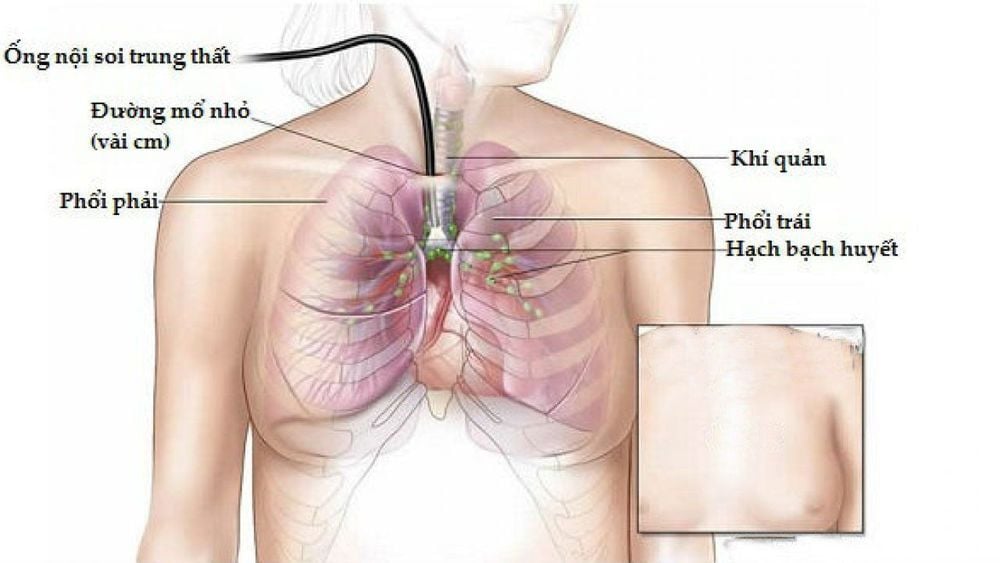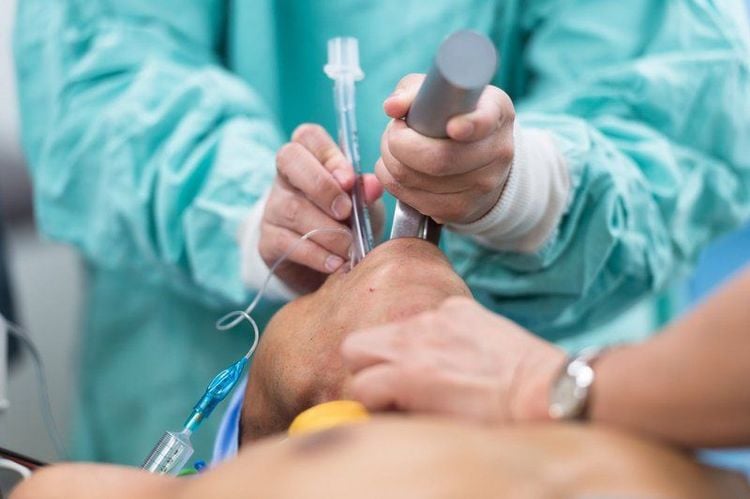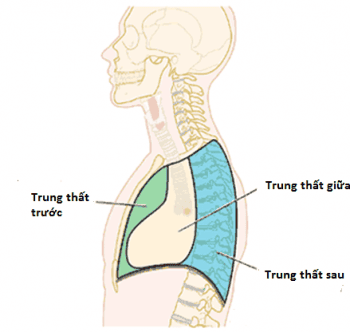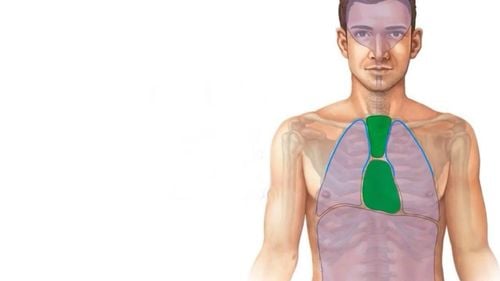This is an automatically translated article.
Thoracic surgery to biopsy mediastinal lymph node tumors is a method with high safety during and after surgery, in order to obtain mediastinal lymph node tumor tissue samples for histopathological examination.
1. Purpose of thoracoscopic surgery to biopsy mediastinal lymph node tumors
Tumor anatomical results have a very important role in the diagnosis and treatment of mediastinal tumors. Many methods can be used to take a biopsy sample to send for pathological examination such as needle biopsy through the chest wall under the guidance of ultrasound or computed tomography, endoscopic ultrasound for biopsy, Open chest surgery for biopsy, laparoscopic surgery for biopsy,... Each method has its own advantages and disadvantages. With each specific case of mediastinal tumor, the doctor will consider choosing the appropriate method.
The thoracoscopic surgery method for biopsy of mediastinal lymph node tumors is a new method, which is evaluated with high safety during and after surgery, minimizing the risk of postoperative complications. In most cases, thoracoscopic surgery to biopsies mediastinal lymph node tumors obtains a sample of tumor tissue large enough for anatomical examination.

Phẫu thuật nội soi lồng ngực được ứng dụng trong sinh thiết khối u hạch tại trung thất
2. Steps of thoracic surgery to biopsy mediastinal lymph node tumors
2.1. Indications Laparoscopic surgery for biopsy of mediastinal ganglion tumors usually uses 3 trocars placed at different intercostals, depending on tumor location, according to the principle of instrument triangle. Surgery is indicated in all primary or secondary mediastinal ganglion tumors requiring specimen for histopathological diagnosis. To participate in this surgery, the patient must be free of diseases and contraindications to thoracoscopy, and have no contraindications to anesthesia. The patient's case could not be biopsied by bronchoscopy or through the chest wall under the guidance of computed tomography.
2.2. Procedures Before surgery, the patient will be explained by the medical staff about the purpose of the surgery, the risks and complications after surgery; and received respiratory physiotherapy before surgery.
Patient and patient records are carefully checked before surgery to ensure the right person, the right disease.
When entering the operating room, depending on the location of the tumor to be biopsied, the surgeon will guide the patient to a supine position, lying 45 degrees or 90 degrees on the operating table. Anesthesiologist administers double-lumen endotracheal anesthesia to collapse one lung, facilitating technical manipulations.

Bệnh nhân được gây mê nội khí quản trước khi tiến hành phẫu thuật
The surgeon will place the trocars, usually 3 trocars will be placed, of which the 10mm trocar for the camera and two 5mm trocars for the surgical instruments. Under the guidance of the camera image, the doctor will bring the instrument close to the lesion, select a favorable lesion for biopsy. The principle of biopsy is minimally invasive to have the most beautiful specimen, respecting the surrounding anatomical components.
After biopsy, conduct careful hemostasis, the surgical specimen is put in the specimen bag to take out. Under the guidance of the camera image, a 28F tube was inserted, the lung was enlarged before the trocar was drained and the surgery was completed.
2.3. Monitoring and handling complications after surgery Bleeding is the most common complication after surgery, patients need to be closely monitored, take good care to detect bleeding in time. Other complications may be encountered such as atelectasis causing respiratory failure due to poor drainage, sputum obstruction, etc. The patient should be detected early and given physical therapy, breathing exercises, guided vibration, etc. expectorant,...
Although there is still a risk of complications after surgery, the rate is very low, the patient's pain problem after laparoscopic surgery is greatly reduced compared to patients who have to have thoracotomy. With outstanding advantages, thoracoscopic surgery is being considered as one of the good methods in diagnosing the anatomical nature of mediastinal lymph node tumors.
Customers who need medical examination and treatment can directly go to Vinmec International General Hospital nationwide or contact the hotline HERE.
Recommended video
Vinmec - Flexible endoscopic laser lithotripsy removes stones up to 2.5 cm
MORE:
Learn about mediastinoscopy Is mediastinal tumor dangerous? Resection of mediastinal tumor by open surgery













